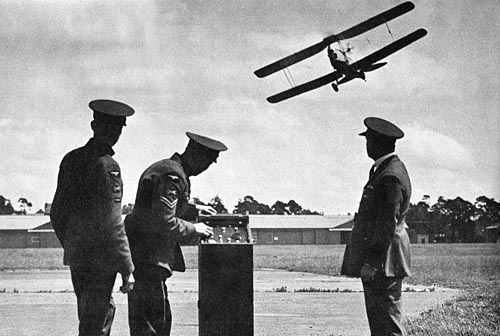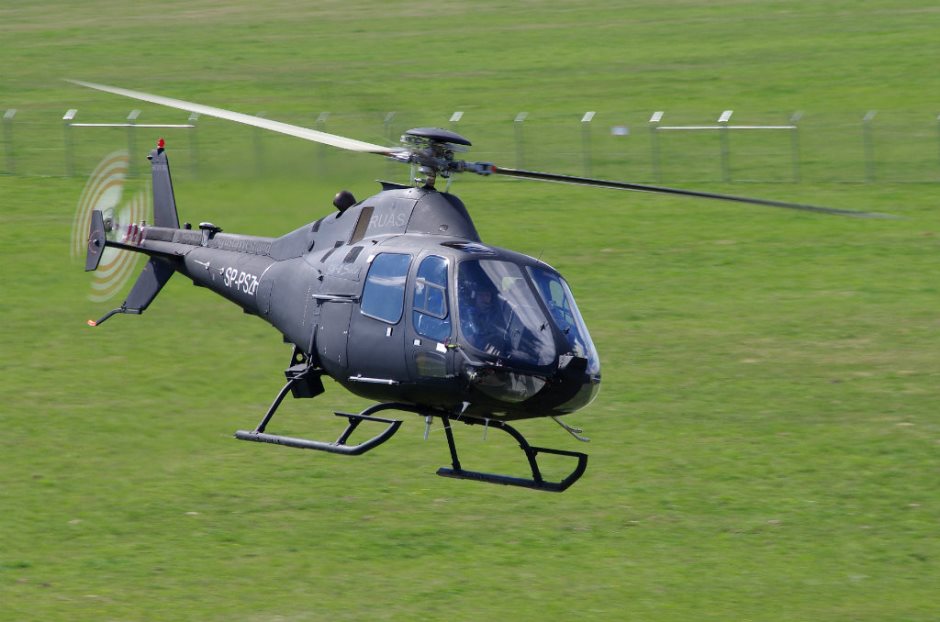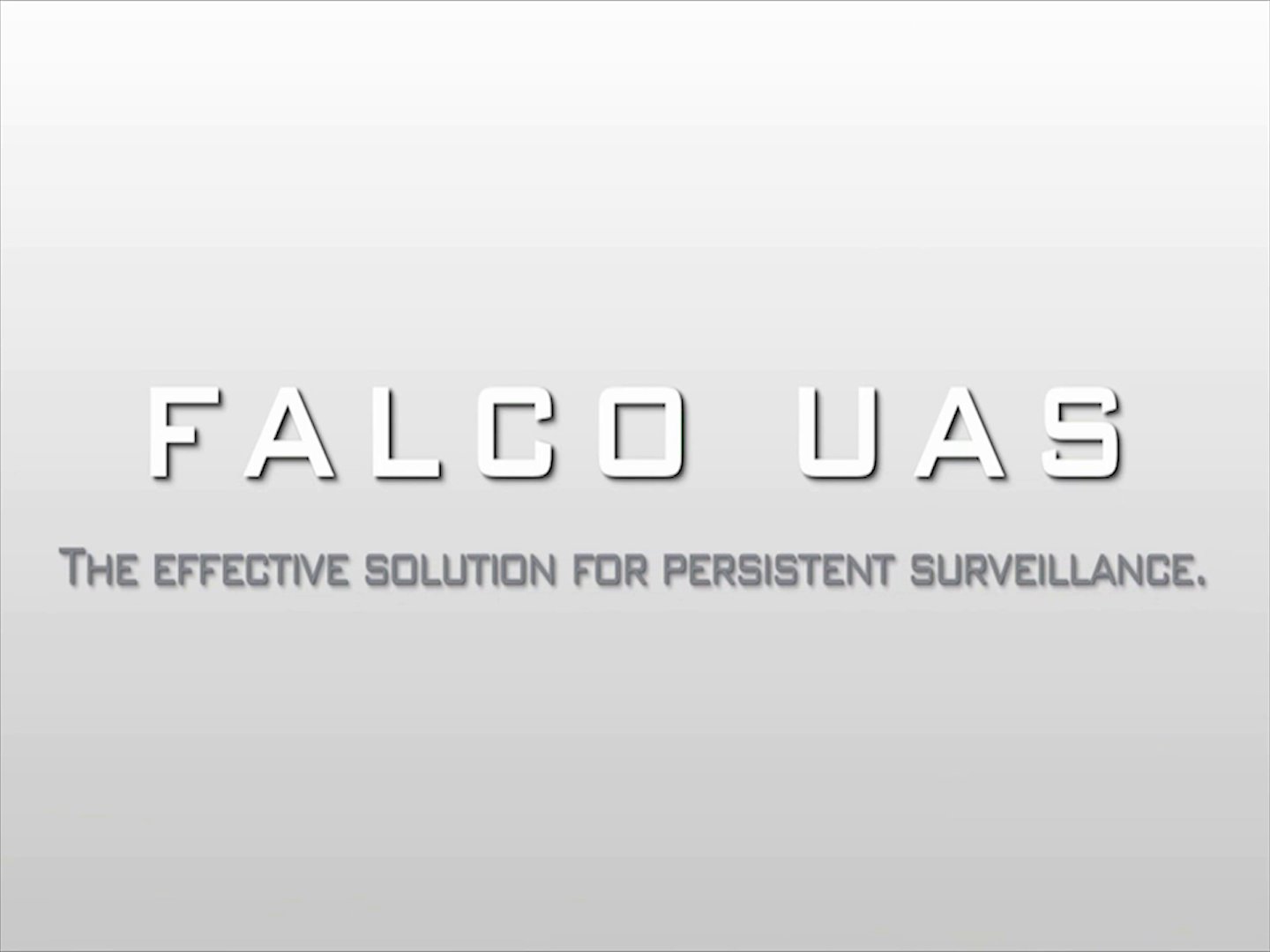Leonardo 11 December 2016
One hundred years have passed since the first uncrewed aircraft flight demonstration, when in 1916 the American inventors Elmer Sperry and Peter Hewitt applied a radio control to an airplane, allowing controlled flight through a gyro system.
However, the true ancestors of the uncrewed aircraft, also called UAS (Uncrewed Aerial System), date back to the 1930s, when the British Royal Navy developed the 'Queen Bee', a radio-controlled aircraft used as a target for shooting practice.
Even the United States, after World War II, built a new uncrewed aircraft, used first as a drone-target and then transformed into a reconnaissance and surveillance aircraft.
Among the precursors in Italy, the company Meteor Costruzioni Aeronautiche (later on re-named Galileo Avionica, then Selex ES, and now Leonardo), developed the first prototypes in the factories of Ronchi dei Legionari (Gorizia). Today, Leonardo realises sophisticated UAS systems such as the Falco, able to meet the most advanced requirements of reconnaissance, surveillance and target identification.
 (Remote Control of the Royal Navy’s 'Queen Bee')
(Remote Control of the Royal Navy’s 'Queen Bee')
In subsequent years, drones have been used very often in conflict scenarios, such as in Vietnam and other South Asian countries, first as scouts and then, after 2001 in Afghanistan, even as combat aircraft.
Drones in civilian missions
Although uncrewed aircraft were created for the military to carry out missions that would be particularly dangerous for the pilots, their use is becoming increasingly consolidated in the civilian sector.
Some drones were already used for humanitarian operations in Bosnia in 1994 and, more recently, when the earthquake struck Haiti in 2010 and Typhoon Haiyan devastated the Philippines in 2013. In 2012, during the MONUSCO operation in eastern Democratic Republic of Congo, the United Nations used drones to monitor rebel activity near the borders of Rwanda and Uganda for the first time. Five Falco produced by Leonardo were flown 24 hours a day, 7 days a week around Goma to monitor troop movements and the civilian population.

There are also many public utility areas in which drones can be used, such as environmental monitoring, precision agriculture, and the prevention and management of natural disasters, in particular fires.
| Leonardo's role |
The UAS are the new business frontier of industries operating in the aerospace and defence sector. In recent years, Leonardo has developed technologies and applications in all its business sectors, with significant investments in platforms, sensors and control logic.
Leonardo is, in fact, among the few companies in the world to possess a wide range of technologies in the UAS sector: from aircraft manufactured independently, such as Falco, the Sky-Y, the SW-4, Solo and Hero helicopters, as well as small drones for surveillance and picking up information, to European collaborations in the MALE RPAS and nEUROn programmes.
Leonardo is also the only European entity that can provide uncrewed solutions for ISTAR missions (Intelligence, Surveillance, Target Acquisition and Reconnaissance), integrating platforms, radar and electro-optic sensors and mission and ground control systems.
| The products |
FALCO
The Falco is an uncrewed tactical system capable of flying at altitudes of up to 6,000 metres, and characterised by an extensive endurance that can surpass 20 hours, currently used by many international customers in geographical and climatic extremes. Used for surveillance applications in the field of security and defence, the Falco is designed to provide command and control capabilities, allowing the real-time identification of objectives and ensuring a tactical view of the scenario thanks a maximum payload of 100 kg.

(The Falco)
SKY-Y
The SKY-Y is an innovative MALE class (Medium Altitude Long Endurance) technology demonstrator designed to carry out surveillance and reconnaissance missions. The aircraft was also chosen by the MIDCAS consortium (Mid Air Collision Avoidance System) for an international research project aimed at providing solutions for collision avoidance in non-segregated airspace, between uncrewed aircraft and conventional piloted aircraft. The trial, which took place in Italy, was the first collision avoidance test in the world.
 (Sky-Y)
(Sky-Y)
SW-4 Solo
The SW-4 Solo's development was based on the light, single-engine SW-4 helicopter with EASA civil certification. It was designed to be used both in manned missions (OPH - Optionally Piloted Helicopter) and in the fully automatic missions with remote pilot (RWUAV - Rotary Wing Uncrewed Air Vehicle), for maximum operating flexibility. The RWUAV version is capable of carrying out various missions, including intelligence, surveillance, targeting, reconnaissance and civil protection, in both land and naval versions. In the manned configuration, the SW-4 Solo can carry out different roles, including personnel carrier.

(SW-4 'Solo' flight demonstration)
HERO
The HERO is a latest generation RWUAV (Rotary Wing Uncrewed Air Vehicle) tactical aircraft, which benefits from Leonardo’s experience in the design and manufacture of helicopters. It has been developed for land and naval operations, where operational reliability and safety are key. With a range of over 6 hours, the HERO is the perfect solution through its low cost and simplified maintenance, for use in civil, military and national security applications, including intelligence, surveillance, targeting, reconnaissance and civil protection.
 (Hero flight demonstration)
(Hero flight demonstration)
Leonardo also creates mini and micro UASs, such as the ASIO and the CREX- B, capable of providing support in surveillance operations, monitoring of critical infrastructures and intelligence even at very close range.
| International partnerships |
At the European level, Leonardo participates in a programme for studying the definition of the new MALE RPAS (Medium Altitude Long Endurance Remotely Piloted Aircraft System) that provides for the development of an uncrewed aircraft system for long-term missions and capable of flying at medium altitudes.
Leonardo is also one of the protagonists in the European cooperation programme nEUROn, created to design, build and test the first European demonstrator with stealth characteristics, i.e. it is not visible to radars.


